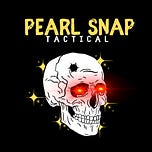In this transmission, we’re delving into the dark and dangerous world of the ambush attack. Listen or read along as we cover:
♠️ What makes the ambush so deadly,
♠️ Elements of the ambush attack,
♠️ Types of ambush attacks
To better protect yourself against the ambush, its critical you understand how these attacks are planned an executed.
So, let’s go!
Ambush Attacks – Dynamics and Dangers
These attacks are not just a threat to law enforcement but also a danger to civilians and soldiers alike.
Whether you’re on the battlefield, patrolling a city street, or going about your daily life, ambushes exploit surprise and overwhelm their targets with devastating speed.
In this episode, we’ll explore the key elements that make ambushes so dangerous.
Then, we’ll dive into two distinct types of ambushes—spontaneous and entrapment—and how they play out in real life.
Four Key Elements of Ambush Attacks
Every ambush—whether against law enforcement, military personnel, or civilians—relies on these four elements:
Concealment
Surprise
Violence of Action
Lack of Provocation
1. Concealment
Concealment is the foundation of any ambush. Attackers position themselves in a way that masks their presence, choosing terrain or urban settings that provide cover or allow them to blend in.
Real-World Example: Beltway Snipers, 2002
In 2002, the Beltway Snipers, John Allen Muhammad and Lee Boyd Malvo, terrorized the Washington, D.C. area. They concealed themselves in the trunk of a modified Chevrolet Caprice, shooting through a small hole in the rear panel.
Their ability to remain hidden and mobile allowed them to evade detection for weeks while ambushing random victims.
It’s important to note that concealment is not always stationary or physical. In some cases, attackers can move with their target, waiting for the perfect moment to strike.
This might involve shadowing a person in a crowd or lurking along a predictable route.
2. Surprise
Surprise is what gives ambushes their devastating power. Attackers control the timing and location of the attack. This allows them to catch the target off-guard, striking when the victim least expects it.

Real-World Example: Dallas Police Ambush, 2016
During a protest in Dallas, Texas, Micah Xavier Johnson reportedly ambushed police officers, using the distraction of the protest to carry out his assault.
According to reports, Johnson, a military-trained marksman, surprised officers by moving from cover to cover, killing five officers and wounding several others before being neutralized.
The element of surprise enabled him to inflict significant damage before responders could regroup.
3. Violence of Action
Ambushes rely on swift, overwhelming violence. The goal is to incapacitate or disorient the target before they have a chance to react.
The point here is to dominate the opponent physically and psychological. In doing so, the attacker not only destroys the victim’s capability to mount a counter-offense, but to erodes their will to do so as well.
Violence of action is a true force multiplier. When I was a prosecutor, I handled several assault cases where a smaller, weaker attacker prevailed against a larger, stronger opponent.
The typical scenario went like this: the attacker would approach from the victim’s blind side (concealment), he would then execute a “sucker punch,” (surprise), then launch a salvo of unrelenting punches, kicks, and other strikes, beating the victim into a bloody pulp.
The victim never saw it coming, never had a chance to react. End of story.
4. Lack of Provocation
One of the most dangerous aspects of an ambush is that it often occurs without warning or provocation.
The victim might have had no previous interaction with the attacker, leaving them mentally unprepared for the assault. Typically, there’s no “lead up,” no signs or indications to alert the victim that an attack is coming. It seems to come out of nowhere.
Real-World Example: NYPD Officers Ambushed in Their Patrol Car, 2014
In 2014, two NYPD officers, Rafael Ramos and Wenjian Liu, were ambushed and killed while sitting in their patrol car. According to reports, the attacker, Ismaaiyl Brinsley, had no personal connection to the officers and carried out the ambush as a retaliatory act against law enforcement.
His attack was sudden, unprovoked, and fatal.
Two Types of Ambushes

With the elements in mind, let’s look at the two main types of ambushes and how they play out in the real world. The two basic types of ambush attacks for our purposes can be categorized as follows:
Spontaneous (Hasty) Ambush
Entrapment (Deliberate) Ambush
Spontaneous (Hasty) Ambush
Spontaneous ambushes are opportunistic attacks, often unplanned and driven by circumstance. These can be as sudden as a purse snatching or as violent as the execution of law enforcement officers sitting down for lunch at a local restaurant.
Real-World Example: West Memphis, Arkansas, 2010
Two officers conducting a routine stop encountered Jerry and Joseph Kane, members of the sovereign citizen movement. The interaction escalated when the younger Kane retrieved an AK-47 from the vehicle and opened fire, killing both officers.
The attack was sudden, unplanned, and deadly - a classic target of opportunity.
The two assailants fled the scene and were latter killed during a standoff with police at a nearby Walmart parking lot.
Entrapment (Deliberate) Ambush
Unlike spontaneous ambushes, entrapment ambushes are carefully planned. In these scenarios, the attacker sets a trap, luring the target into a vulnerable position where escape becomes nearly impossible.
Real-World Examples:
In 2014, Curtis Holley set his home on fire in Tallahassee, Florida, to lure first responders into a trap. As law enforcement arrived to assist, Holley ambushed them with a .40 caliber handgun, killing Deputy Christopher Smith and wounding another officer. It took a 12-minute firefight before Holley was neutralized.
The Battle of Ia Drang, in Viet Nam, is another example of an entrapment ambush. American soldiers were drawn into a North Vietnamese trap, leading to heavy casualties before they managed to regain control.
The story of this encounter was documented in the book, We Were Soldiers Once…and Young. Mel Gibson made a movie about it with a similar title. I highly recommend you read the book and watch the movie. There’s a host of lessons there waiting for you that’s well-worth your time.
Training to Respond to Ambush Attacks
In a forthcoming transmission, I’ll break down tactics and strategies you need to learn in order to defend against ambushes. Whether you’re a law enforcement officer, soldier, or civilian, you need to understand how to identify the signs of concealment, maintain situational awareness, and respond effectively when ambushed.
The difference between life and death can come down to how quickly you recognize and react to an ambush. For civilians, this might mean spotting suspicious behavior early. For officers and soldiers, it’s might be about controlling the fight when things go sideways.
Wrapping it up

Ambush attacks—whether spontaneous or premeditated—are among the most dangerous types of assault. But understanding how they work and how to respond can tilt the odds in your favor.
Did you find this information valuable? Share it with a buddy and keep the conversation going!
Coming up on Warrior Wednesday for premium subscribers, we’re coving:
Sleeper Cells In America: Are We Ready?
In that transmission we’ll cover:
♠️ Who they are
♠️ Are they really here?
♠️ What to do about it
Make sure you’ve upgraded, so you don’t miss it!

















Share this post